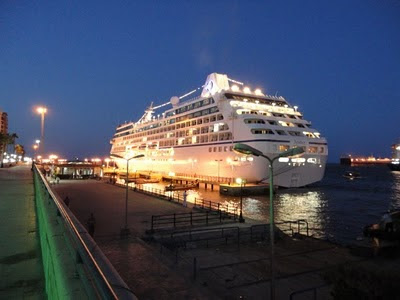



Arriving in Jordan's capital, Amman, in the middle of a summer afternoon, the city struck me as a sprawling, dusty, uninspiring place. But at night Amman magically transforms into a feast for the senses -- noisy, bustling, colorful, and full of the wonderful scents of the Middle East.
Amman, or Philadelphia as it used to be called, has a history that goes back 5500 years and one can get better understanding of the city's past by visiting the Roman theater in the downtown area and the citadel (and archaeological museum) on top of Jebel al Qala, Amman's highest hill.
Amman, or Philadelphia as it used to be called, has a history that goes back 5500 years and one can get better understanding of the city's past by visiting the Roman theater in the downtown area and the citadel (and archaeological museum) on top of Jebel al Qala, Amman's highest hill.



















